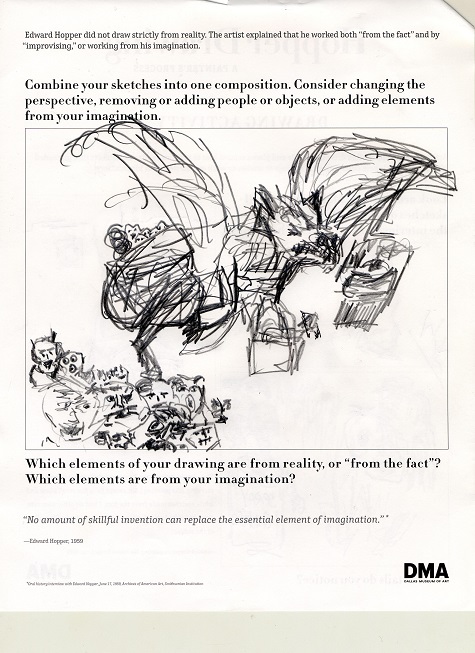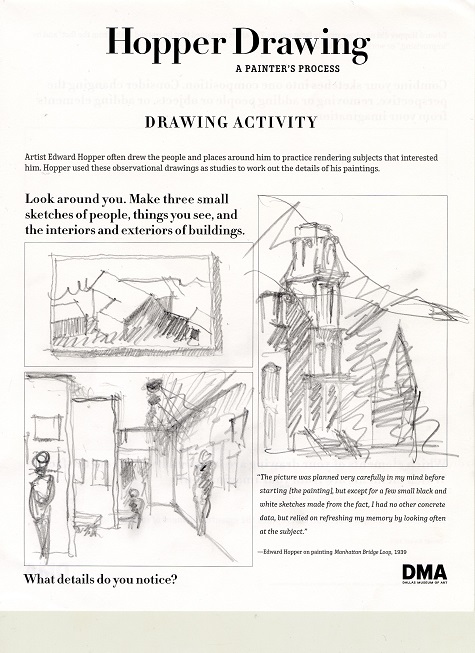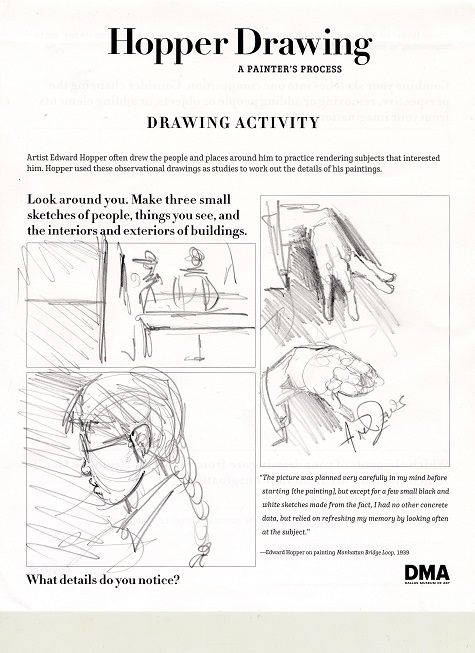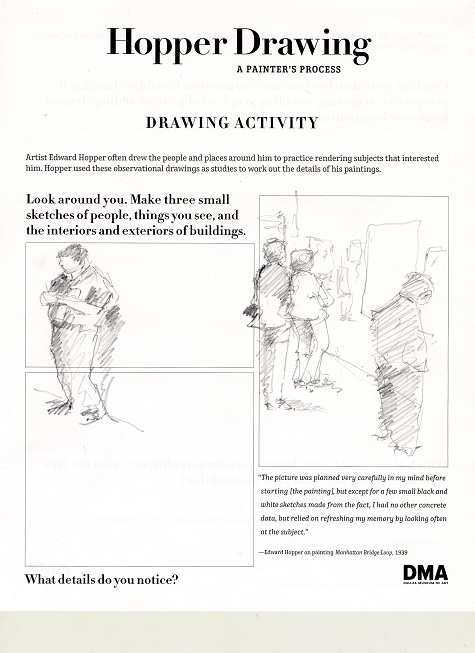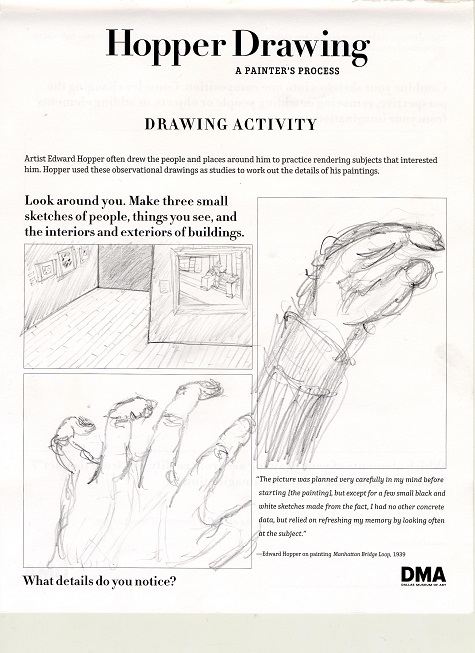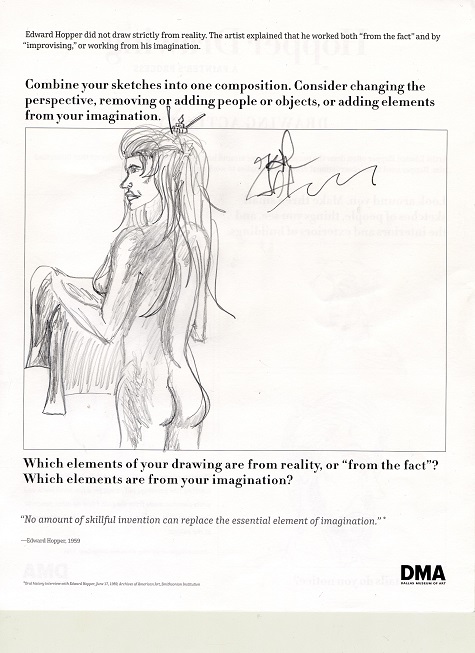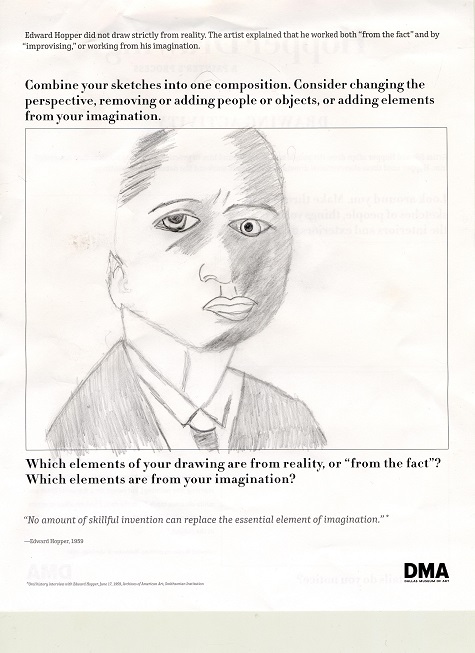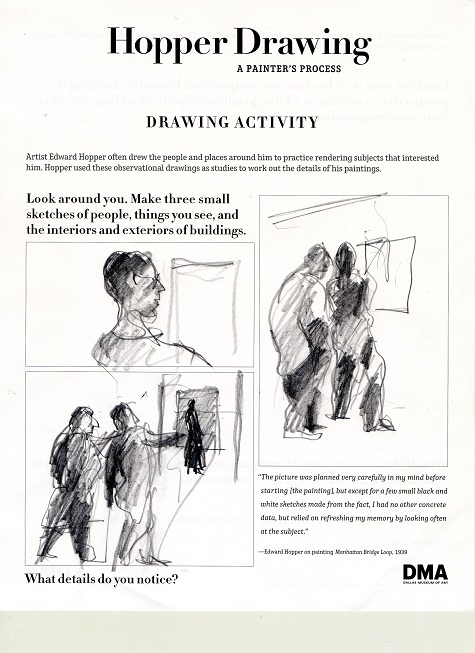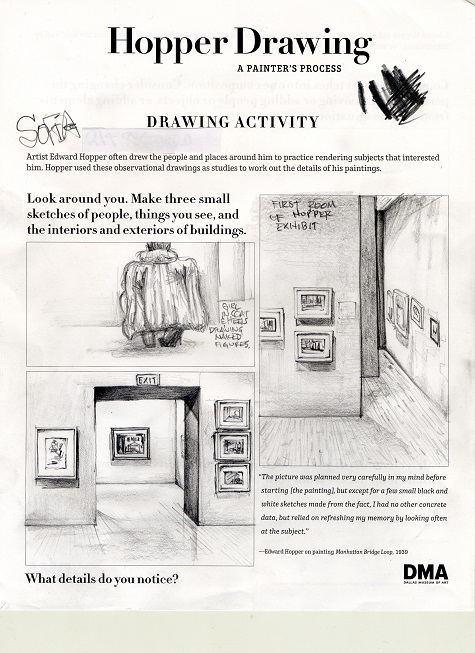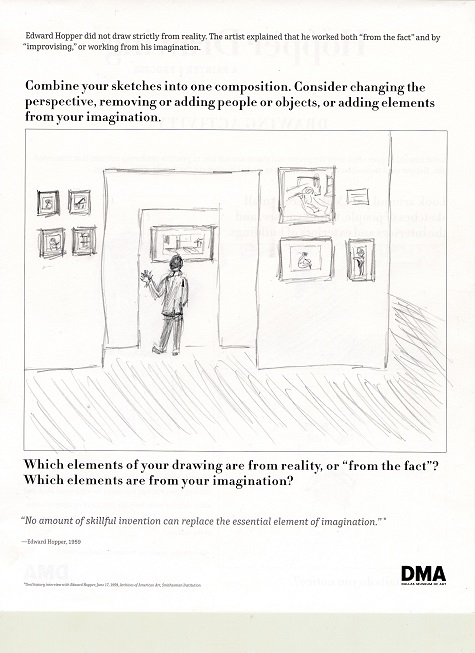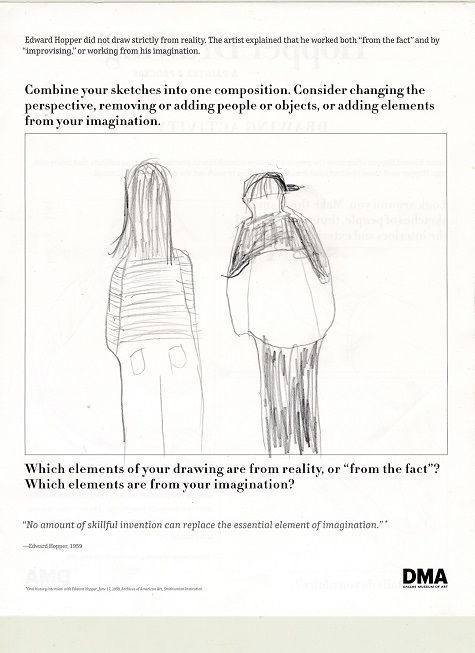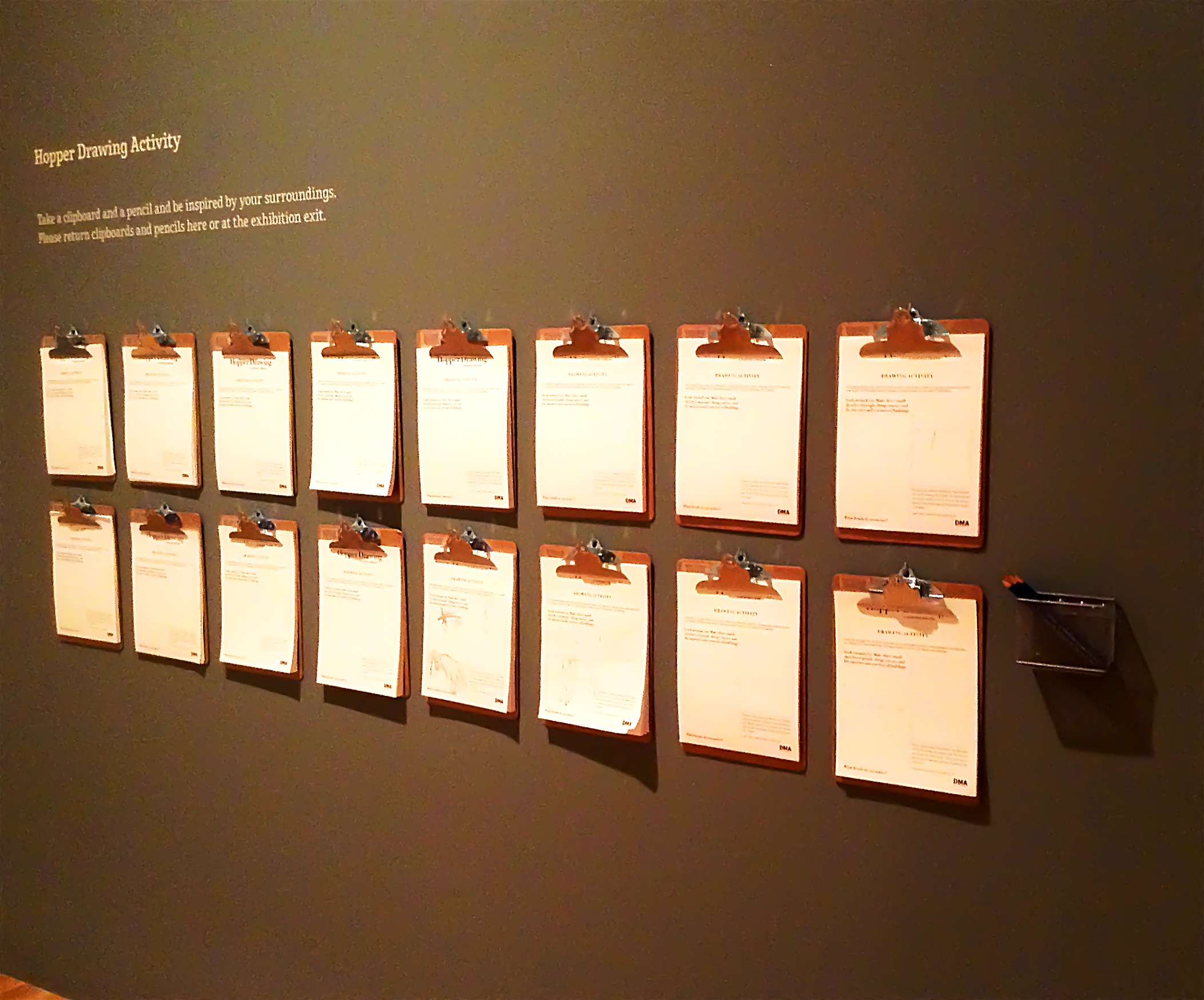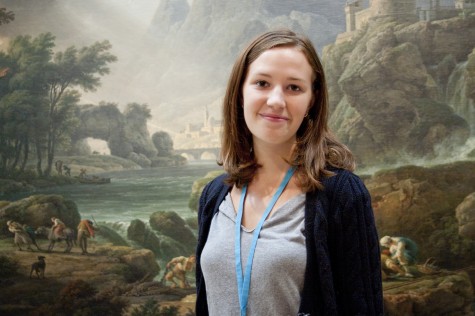The opening of the much-anticipated exhibition Hopper Drawing: A Painter’s Process is just around the corner. Organized by Curator of Drawings Carter E. Foster of the Whitney Museum of American Art, New York, the show had a very successful run there before coming to Dallas. Shortly before the show’s opening here, we were fortunate to sit down with Carter for a quick Q&A to learn a bit more about the exhibition.
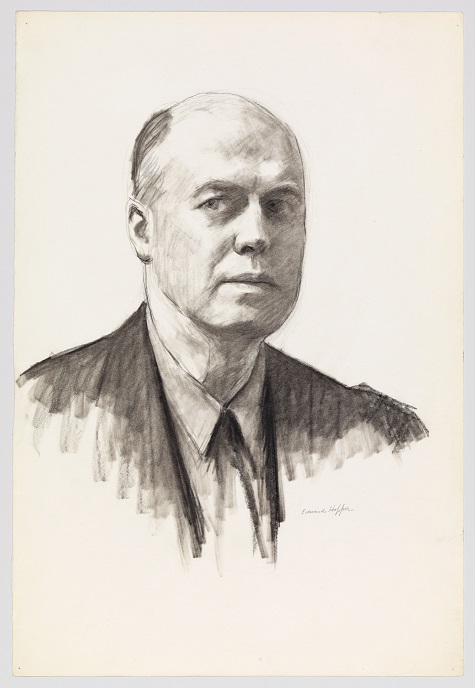
Edward Hopper, Self-Portrait, 1945, fabricated chalk and charcoal on paper, Whitney Museum of American Art, New York; Josephine N. Hopper Bequest 70.287, © Heirs of Josephine N. Hopper, licensed by Whitney Museum of American Art, N.Y.
In what regard did Hopper hold his drawings? Simply as a means to an end? Or more?
Hopper actually tended to belittle his drawings when asked about them. During his lifetime, he somewhat reluctantly shared them with others when they inquired about his drawings. He most definitely considered himself first and foremost a painter, and his drawings were the means through which he worked out his ideas for paintings. But he also seems to have done them for his own private satisfaction, as many artists do, as a way to keep his hand and eye honed.
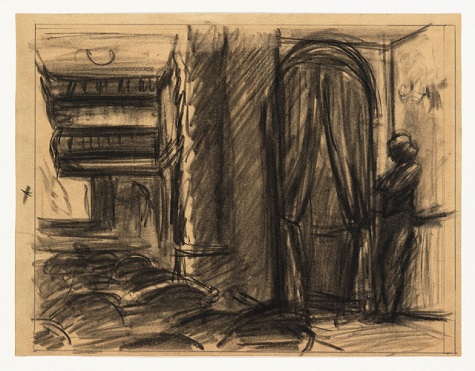
Study for New York Movie, 1938 or 1939, fabricated chalk on paper, Whitney Museum of American Art. Image courtesy of gwen-photoblog.blogspot.com
Do you have a favorite drawing,or suite of drawings that have a particular appeal? And, why?
There are many, but I especially love the close-up bust-length study for New York Movie, in which Hopper features just the slightest winsome half-smile on the face of the usherette (in this case, his wife, Jo, who posed for him). The technique of this drawing is just amazing, with a variety of textures and great subtlety in the play of light across her face.
Did you have any preconceived notions that were overturned by what you learned during your research?
No. When I do research I try to let the material lead the way. Research is about asking the right questions, rather than having pre-formed ideas.
How did you discover some of New York’s buildings in Hopper’s drawings?
Mainly by looking at the incredible collection of photographs from the 1930s commissioned by the Local History division of the New York Public Library. They are all online and searchable by street location. Very useful! Also, the collection of “Subway construction photographs” at the New York Historical Society was an important source of images of a vanished New York City.
How did your idea for this exhibition develop?
Since I’m curator of drawings, and half of our drawing collection is works by Edward Hopper, it made perfect sense to propose an exhibition. I was lucky to be able to delve in so deeply.
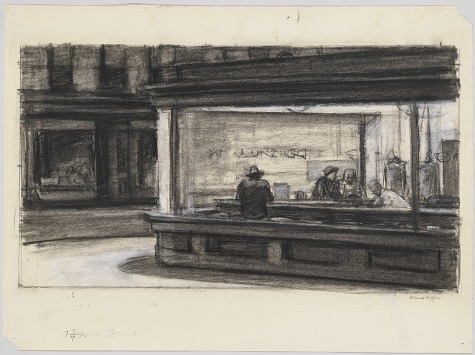
Edward Hopper, Study for Nighthawks, 1942, fabricated chalk and charcoal on paper, Whitney Museum of American Art, New York; purchase and gift of Josephine N. Hopper by exchange 2011.65, © Heirs of Josephine N. Hopper, licensed by the Whitney Museum of American Art, N.Y.
What new discoveries about Hopper’s drawing process did you make in the course of working on this exhibition?
The heart of this exhibition is examining what Hopper saw, what he drew, and what he painted in order to understand better his artistic process. I think the research, in particular on Nighthawks and New York Movie, helped us elucidate more clearly than ever before the way Hopper tweaked and tinkered with reality to get to his uncanny, often strange, and ultimately universal imagery of the human condition and the self in the world.
Martha MacLeod is the curatorial administrative assistant for the European and American Art Department at the DMA.
